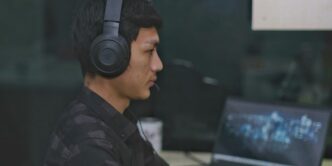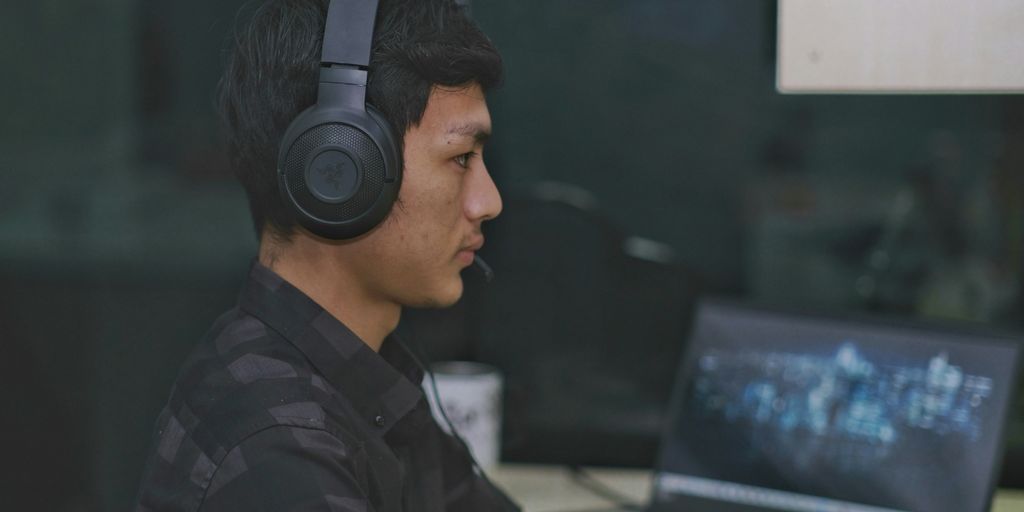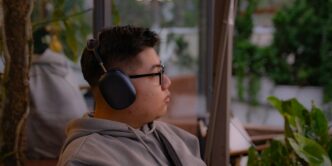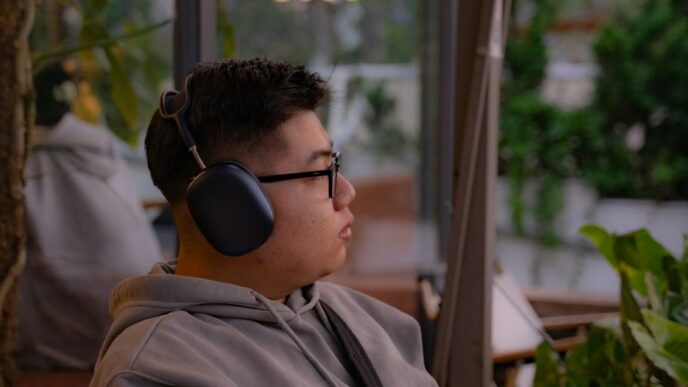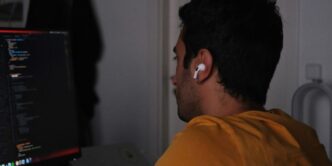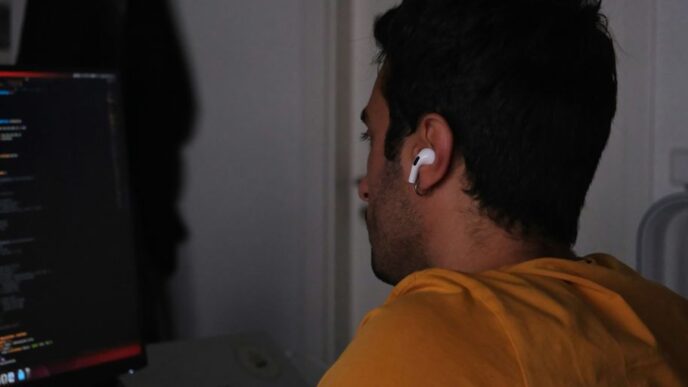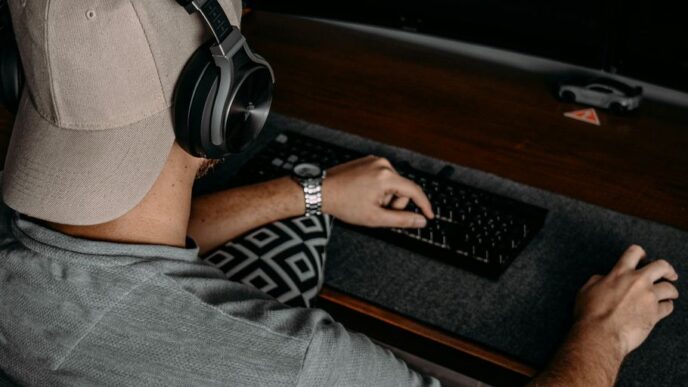So, I’ve been diving into Population: One lately, and honestly, it’s been a wild ride. It’s a VR battle royale, which sounds pretty intense, right? I wanted to see if all the hype was real, or if it was just another game that looked good on paper but didn’t quite deliver. Let’s break down what makes this game tick and if it’s worth your precious gaming time.
Key Takeaways
- Population: One truly shines with its unmatched verticality and freedom of movement, letting you climb and glide all over the map.
- The game successfully adapts the battle royale formula for VR, focusing on squads of three for intense team play.
- With a $29.99 price point and crossplay support, the game is accessible to a wide range of VR players, keeping the player base lively.
- While the graphics are decent and optimized for VR, the stylized aesthetics might not appeal to everyone, and avatar options are limited.
- Population: One offers a solid VR shooter experience with addictive gameplay, though some minor glitches and potential VR sickness are points to consider.
Population: One’s Core Gameplay Loop
Population: One really leans into the battle royale formula, but it adds some unique VR twists that make it stand out. The core idea is simple: drop into a map, find gear, and be the last squad standing. But how you get there is where things get interesting.
Unrivaled Verticality and Freedom of Movement
This game is all about climbing, gliding, and building. You can grab onto almost any surface and pull yourself up, which is pretty wild in VR. Once you’re up high, you can jump off and deploy a wingsuit to glide across the map. This freedom to move vertically and horizontally changes how you approach combat and exploration. You’re not just stuck on the ground; you can attack from above, escape to rooftops, or flank enemies by gliding around them. It feels like you have a lot more options than in typical shooters.
The Battle Royale Formula in VR
It follows the standard battle royale structure. A shrinking play area forces players closer together, increasing the chances of encounters. You start with nothing and have to scavenge for weapons, ammo, and shields. The pacing can be a bit slow during the looting phases, which is common for the genre, but in VR, it feels more engaging because you’re physically interacting with the world to find your gear. The goal is always to outlast everyone else.
Squads of Three: The Only Way to Play
Unlike some other battle royales that offer solo or duo modes, Population: One is strictly squads of three. This means teamwork is absolutely key. You need to communicate with your teammates, cover each other, and revive downed allies. It really pushes the social aspect of VR gaming. If you prefer to go it alone, this game probably isn’t for you, but if you enjoy coordinating with friends, it’s a blast. Winning as a team feels pretty rewarding.
Is Population: One Worth Your Investment?
So, is Population: One actually worth your hard-earned cash? Let’s break it down.
Price Point and Platform Availability
Population: One originally launched at $29.99. It’s available on PC VR platforms like Steam and the Oculus Rift store, as well as for the standalone Meta Quest headsets. This pricing was pretty standard for VR titles when it came out, and considering the amount of replayability, it felt like a fair deal. It’s not a free-to-play game, so you do have to put some money down upfront, but it’s not an outrageous amount for a VR shooter that keeps people coming back.
Crossplay and Playerbase Vitality
One of the biggest wins for Population: One is its robust crossplay. This means players on Quest, Rift, and PC VR headsets can all play together. This is super important for keeping the player base healthy, especially in a game that relies on having enough people for matches. If it were locked to just one platform, it might struggle to find full lobbies. But with everyone playing together, you’re much more likely to jump into a game quickly, no matter what VR system you own. This really helps the game feel alive and active.
A Solid Foundation for Future Growth
When Population: One first came out, it felt like a really strong starting point. The core mechanics – climbing, gliding, and shooting – were all there and worked well. While some might have wanted more game modes or different maps right away, the developers have shown a commitment to updating and expanding the game. It has a good base that can easily support new content, like new weapons, map changes, or even different ways to play. This means the game isn’t just a one-and-done experience; it has the potential to keep getting better and offering new things to do over time, which is great for long-term enjoyment.
Navigating the Virtual Battlefield
Population: One really leans into its "Climb. Fly. Build." tagline, and that’s where the real fun starts after you drop from your pod. Forget just running around on the ground; this game lets you scale pretty much any surface you see. Walls, buildings, even those tall windmills – if it’s got a climbable texture, you can grab onto it. This verticality is a game-changer. You can get to high ground super fast, giving you a great view of the map and a chance to pick off enemies still gliding in. It’s what they call their "Vertical Combat System," and it means fights aren’t just happening on one level, but all around you, up and down.
Once you’re on solid ground, or even in the air, building is your next best friend. You can throw up metal shields pretty much anywhere – above you, around you, even below you if you’re feeling fancy. It’s a quick way to get some cover when bullets start flying. I personally like to keep moving, so I’ll often do a one-handed glide while shooting, which feels pretty wild.
Climbing, Gliding, and Building Mechanics
The core of moving around in Population: One is all about mastering three key actions: climbing, gliding, and building. It sounds simple, but the way they’re implemented in VR makes them feel really natural and impactful.
- Climbing: You can grab onto almost any surface. Your hands will automatically latch on, and you can pull yourself up. It feels surprisingly good, letting you reach vantage points or escape tricky situations.
- Gliding: Once you jump from a height, you can spread your arms to deploy a wingsuit. The longer you hold your arms out, the more control you have over your glide. It’s how you cover large distances and get to different parts of the map quickly.
- Building: You can quickly deploy cover using your hands. Think of it like creating instant shields. You can place them strategically to block enemy fire or create new pathways.
Simplified Controls and Accessibility
BigBox really tried to make this game accessible for VR newcomers. The controls are pretty straightforward, which is a big deal when you’re trying to manage shooting, climbing, and gliding all at once.
- Intuitive Gestures: Most actions are tied to natural hand movements. Climbing feels like you’re actually grabbing, and gliding is as simple as spreading your arms.
- Minimal Button Presses: While there are buttons for certain actions, the game relies heavily on your physical movements, reducing the need to remember complex button combinations.
- Customization Options: There are settings you can tweak to make the experience more comfortable, which is always a plus for VR games.
The Pace of VR Battle Royale
Battle Royale games can sometimes have slow moments, especially when you’re just looting or waiting for the next phase. In a regular game, it’s easy to alt-tab or check your phone. But in VR, you’re pretty much stuck in the game world. This means even the downtime feels more engaging because you’re still physically present. Population: One manages to keep things moving, though. The constant threat of vertical attacks and the ability to glide anywhere means there’s rarely a dull moment. You always have to be aware of what’s happening above and around you, which keeps the tension high.
Visuals and Audio Experience
When you first drop into a match in Population: One, the visuals are pretty decent. They’re not going to blow you away like some of the super high-end PC VR titles, but for a game that also runs on standalone headsets like the Quest 2, it’s quite good. Textures are okay, and the lighting is functional, but don’t expect photorealism. The game opts for a more stylized look, which helps it run smoothly and keeps the focus on the action. Character models and weapons have a distinct style, not quite cartoony, but not hyper-realistic either. It strikes a nice balance that feels appropriate for the fast-paced gameplay. The draw distance is impressive, letting you see enemies from far off, which is important for spotting targets while gliding.
Passable Graphics and Optimization
The graphics in Population: One are definitely passable. They’re optimized well, which is a big plus, especially for those playing on less powerful hardware. You won’t be seeing super detailed environments or fancy particle effects, but the game runs smoothly for the most part. This optimization means you can focus on the combat and movement without worrying too much about frame rate drops. It’s a trade-off that makes sense for a VR battle royale where performance is key. The game does a good job of making the world feel big and open, even if the finer details aren’t always there.
Stylized Aesthetics and Environment Design
Population: One leans into a stylized aesthetic that works well for its VR nature. The environments are designed with verticality in mind, featuring plenty of structures to climb and glide from. While the textures might not be the most detailed, the overall look is cohesive and helps the game maintain its performance. The color palette is generally bright and clear, making it easier to distinguish players and objects in the heat of battle. It feels like a world built for movement and combat, rather than just looking pretty. You can find more about the game on the Oculus Store.
Sound Design and Immersion
The sound design in Population: One does a solid job of pulling you into the experience. Footsteps, gunfire, and glider sounds are all clear and help you pinpoint enemy locations. The audio cues are important for situational awareness, especially when you can’t see an opponent. The ambient sounds of the environment also add to the immersion, making the world feel more alive. While the voice acting for the characters isn’t groundbreaking, it serves its purpose. Overall, the audio contributes positively to the frantic and engaging nature of the game, making those moments of spotting an enemy by sound feel really rewarding.
Potential Drawbacks and Considerations

While Population: One offers a lot of fun, it’s not without its rough edges. Some players might find the visual style a bit too cartoony, especially with the character outfits. Think less gritty military shooter and more colorful arcade experience. This can be a bit jarring when you’re in the middle of an intense firefight. Also, the game relies heavily on its unique movement mechanics, which, while generally smooth, can sometimes lead to awkward interactions with the environment or other players. It’s not a dealbreaker, but expect a few moments where you get snagged on something unexpectedly.
Minor Glitches and Ping Issues
Like many online multiplayer games, Population: One isn’t immune to technical hiccups. You might run into the occasional bug, though most seem to be minor annoyances rather than game-breaking problems. A more persistent issue for some players can be network lag, or ping. Depending on your connection and where the game servers are located, you might experience delays that put you at a disadvantage. This can be frustrating when you feel like you’re being shot after you’ve already taken cover.
Content Diversity and Avatar Limitations
Right now, there’s only one main map. While it’s well-designed and offers varied environments, playing on the same terrain repeatedly can eventually feel a bit stale. The developers have mentioned plans for more content, but as of now, variety is somewhat limited. Additionally, the character customization, while present, doesn’t offer a huge range of options. The avatars can feel a bit generic, and the cosmetic items, while fun, don’t always fit the intense combat vibe for everyone. Some players wish for more grounded or realistic cosmetic choices.
VR Sickness and Comfort Options
Virtual reality gaming can be a challenge for some due to motion sickness. Population: One’s fast-paced movement, especially the gliding and climbing, can be intense. While the game does offer various comfort settings, like vignetting during movement, not everyone finds them sufficient to prevent discomfort. If you’re new to VR or particularly sensitive to motion sickness, it’s worth trying the game with caution or looking into VR comfort best practices before diving in.
The Verdict: A Must-Play VR Title?

So, is Population: One worth your hard-earned cash? Honestly, if you’re even a little bit curious about VR shooters or battle royales, the answer is a pretty resounding yes. It really feels like a game that understands what makes VR special, especially with its movement. It’s not just a battle royale shoehorned into VR; it’s a VR game that happens to be a battle royale. The freedom to climb anything, glide from any height, and build cover on the fly creates a dynamic that few other games can match. It’s addictive, it’s fast-paced, and it’s genuinely fun, even if you’re not usually a fan of the genre.
A New Addictive VR Shooter
This game has a way of pulling you in. You drop, you loot, you fight, you climb, you glide, and you repeat. It sounds simple, but the VR implementation makes it feel so much more engaging. The controls are pretty intuitive once you get the hang of them, and the constant need to adapt to your surroundings keeps things fresh. I found myself losing track of time more than once, just wanting one more match. It’s the kind of game that makes you excited to put on the headset.
The Best VR Battle Royale on the Market
When you look at other VR battle royales, Population: One really stands out. The verticality is a huge part of that. Most games keep you pretty grounded, but here you can scale buildings, leap off cliffs, and use your glider to reposition yourself constantly. This freedom of movement changes how you approach combat and exploration entirely. It’s a well-polished experience that feels good to play, even on less powerful VR setups. If you’re looking for the top-tier VR battle royale experience right now, this is it. You can find more details on the game’s official website.
Long-Term Staying Power for VR
While it might not have the massive player counts of some non-VR giants, Population: One has a solid foundation. The developers are actively updating it, and the crossplay feature means you’ll always find matches. The core gameplay loop is strong enough to keep people coming back. It’s the kind of game that could easily become a VR staple, much like Fortnite or PUBG did for their respective platforms. It’s a strong contender for a game you’ll keep returning to for a long time.
So, Is Population: One Worth Your Time?
After spending a good chunk of time in Population: One, it’s clear this game really nailed the VR battle royale experience. The climbing and gliding mechanics are a blast, making movement feel super fluid and exciting, unlike anything else out there. While it might not have the sheer player count of its flat-screen cousins, the action feels more personal and intense. It’s a solid foundation, and even with a few minor rough edges, like wanting a bit more variety in what you do, it’s easily one of the best VR shooters available. If you’re looking for a fast-paced, action-packed VR game, Population: One is definitely worth checking out.
Frequently Asked Questions
What kind of game is Population: One?
Population: One is a virtual reality game where you team up with two other players to fight against other teams until only one team is left. It’s like other popular battle royale games, but you play it using a VR headset.
Can I play Population: One with friends on different VR systems?
Yes, Population: One works on different VR systems like Oculus Quest and PC VR headsets. This means you can play with friends no matter which VR system they have.
What makes the movement in Population: One special?
The game lets you climb almost anything, jump off and glide through the air, and build structures for cover. These moves make the game very exciting and give you lots of ways to move around the map.
How much does Population: One cost and where can I buy it?
The game costs $29.99. It’s available on platforms like the Oculus Store and Steam for PC VR.
Are there any problems with Population: One?
While the game looks okay and runs smoothly, some players have noticed small bugs or connection problems. Also, the game doesn’t have many different types of things to do or ways to change your character’s look.
Is Population: One a good VR game?
Population: One is considered one of the best VR battle royale games available. It’s fun, fast-paced, and offers a unique way to play the battle royale style.

